Judi Lynn
Judi Lynn's JournalFossil proves hyenas once roamed Canada's Arctic Plains
Fossil proves hyenas once roamed Canada's Arctic Plains
4 hours ago
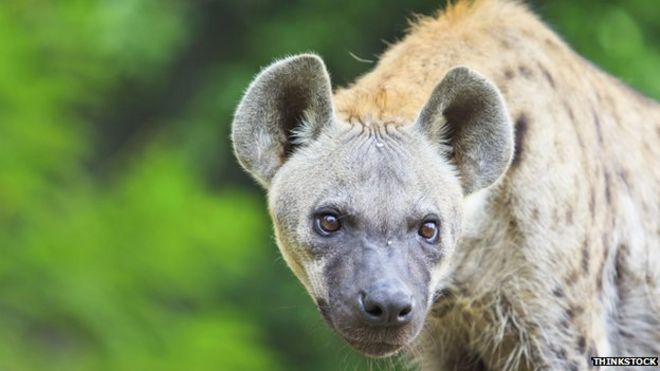
A 50-year-old mystery surrounding a pair of fossilised teeth has been put to rest by new research that suggests hyenas once roamed Canada's Arctic.
A team of researchers have identified the teeth, which were found in the Yukon in the 1970s, as belonging to hyenas one million years ago.
Their findings were published on Tuesday in scientific journal Open Quaternary.
The discovery sheds new light on the evolution of the ferocious scavengers.
The two teeth were found during a paleontological expedition in Yukon's Old Crow Basin in 1973.
Indigenous explorers have been working with scientists to plumb the treasures of the region for over a century, says Grant Zazula, a palaeontologist with the Yukon government. But out of more than 50,000 specimen collected, only two that could belong to a hyena have been found.
More:
https://www.bbc.com/news/world-us-canada-48682723
A bridge made of grass
2 hours ago
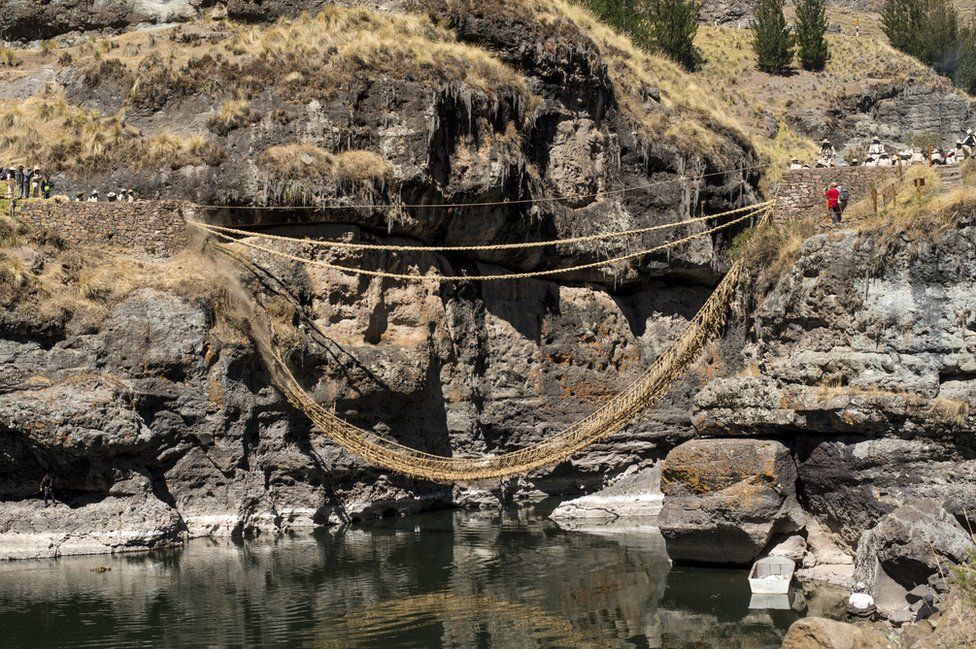
JORDI BUSQUE
Every year the last remaining Inca rope bridge still in use is cast down and a new one erected across the Apurimac river in the Cusco region of Peru.
The Q'eswachaka bridge is woven by hand and has been in place for at least 600 years. Once part of the network that linked the most important cities and towns of the Inca empire, it was declared a World Heritage Site by Unesco in 2013.
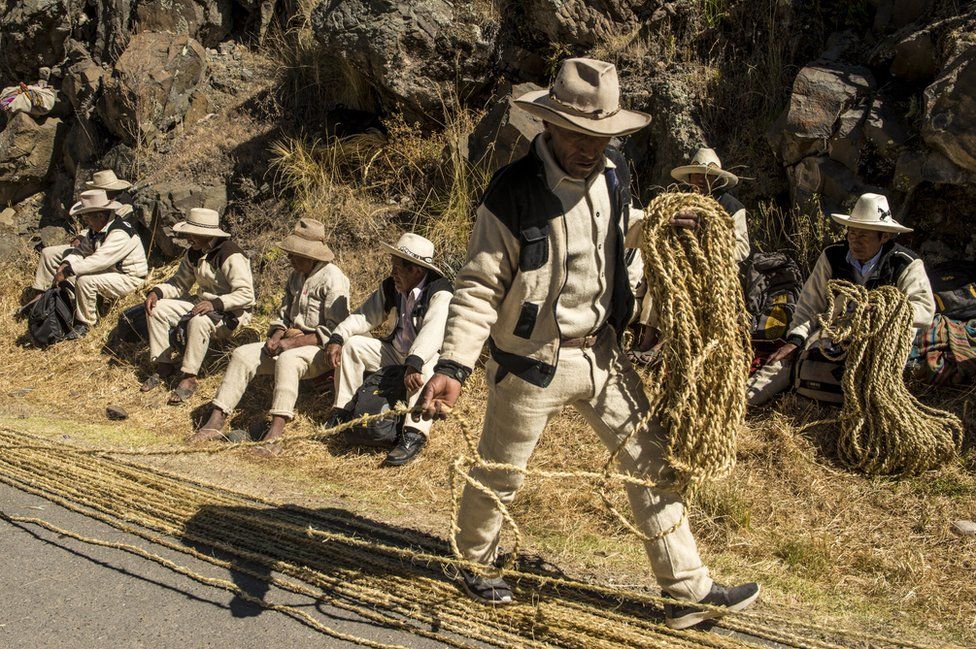
JORDI BUSQUE
The tradition has been passed on from generation to generation with every adult in the communities on either side gathering to bring new life to the crossing.
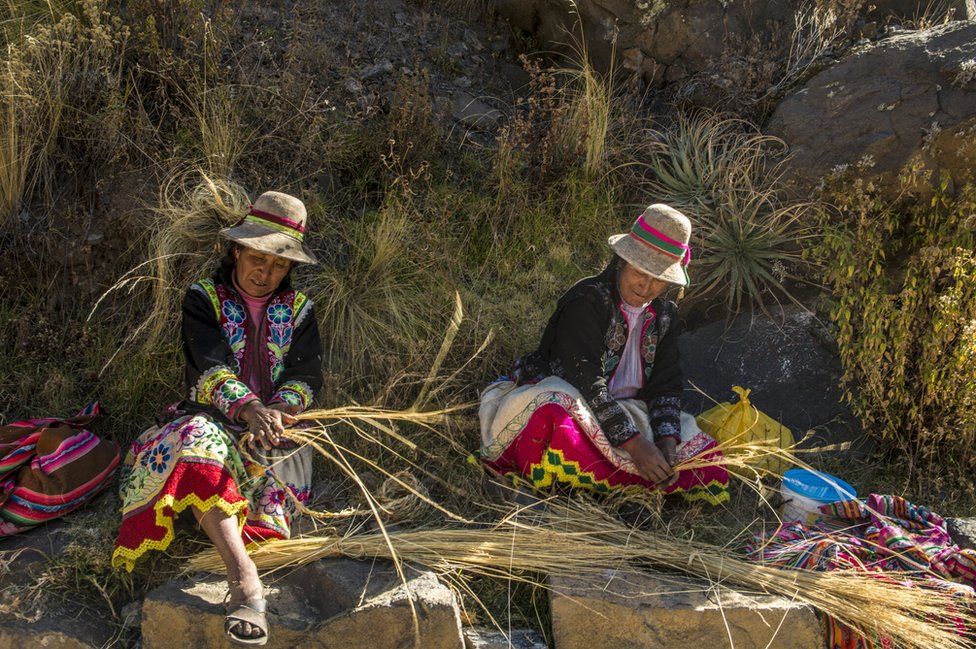
JORDI BUSQUE
Tradition dictates that only men are allowed to work on the making of the bridge itself. Women remain in the upper part of the gorge, weaving the smaller ropes.
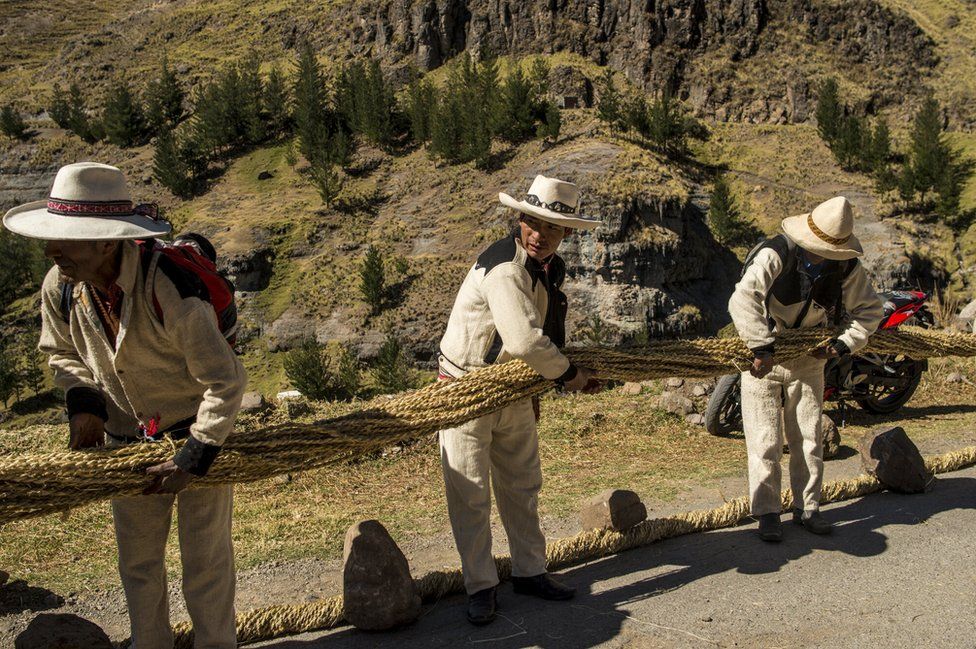
JORDI BUSQUE
During the first day of the reconstruction, men gather around the old bridge and weave the smaller ropes into bigger ones. The main support of the bridge comes from six large three-ply ropes about one foot thick, each containing about 120 of the original thinner ropes.
More:
https://www.bbc.com/news/in-pictures-48628325
How Colombia's former army chief is drowning in his own buckets of blood
How Colombia’s former army chief is drowning in his own buckets of blood
by Adriaan Alsema June 14, 2019
General Mario Montoya, who former President Alvaro Uribe considers a national hero, is being exposed by his former subordinates as one of the cruelest and most bloodthirsty war criminals in Colombia’s history.
Former military commanders who are testifying before the country’s war crimes tribunal have been painting a picture of a man who would murder pretty much anyone to advance his career.
One of the latest and most damning testimonies came from former Colonel Gabriel Rincon, the highest-ranking former official who was sentenced to 46 years in prison for his participation in the mass killing of civilians.
Former Colonel Gabriel Rincon
According to Rincon, Montoya told commanders he expected “liters of blood, buckets of blood” after Uribe promoted him commander of the National Army.
More:
https://colombiareports.com/how-colombias-former-army-chief-is-drowning-in-his-own-buckets-of-blood/
Why Hondurans Set Fire to the US Embassy
June 13, 2019 Alexander Rubinstein
Ten years after a US-backed coup handed Honduras over to big business, the country is rising up. A leader of deposed President Manuel Zelaya’s party explains to The Grayzone what’s behind the protest wave.
By Alex Rubinstein
The streets of Honduras were filled with protesters and clouds of tear gas as the month of June began. The national police fanned out through the country to crush the protests with heavy-handed tactics at the direction of President Juan Orlando Hernández, the US-supported neoliberal leader who won power in elections marred by documented fraud.
As the protests peaked, fire was set to the doors of the American embassy in the capital, Tegucigalpa, in an apparent act of retribution against the United States for its role in propping up the widely unpopular president. It was a striking act of symbolic resistance that recalled events in 1988 when Hondurans burned the vehicles of US embassy personnel to protest Washington’s dirty war against Nicaragua. The fortifications installed around the US embassy after that incident may have prevented the latest burning from consuming the rest of the building.
Ten years ago, the democratically elected center-left Honduran President, Manuel Zelaya, was whisked away from his residence in a brazen military raid supported by the United States. Zelaya’s removal cleared the path for the interests of big business across the country. As the ten year anniversary of the U.S.-supported coup approaches, Hondurans are rising up against neoliberal austerity measures imposed by Washington and the International Monetary Fund (IMF) that have triggered mass public sector layoffs and raised prices on basic goods.
Following mass demonstrations on Friday, May 31 which were especially sizable in the capital of Tegucigalpa, The Grayzone spoke by phone with Gerardo Torres, Secretary of International Affairs for the Liberty and Refoundation Party (LIBRE), the new party to which Zelaya now belongs.
More:
https://orinocotribune.com/why-hondurans-set-fire-to-the-us-embassy?fbclid=IwAR3LkUE6NccITJT4VTJ1X9-G5F10yTNGIzLxEhjYWQMxQtPFfNJePdv2KUY
Illuminating the night with curtains of light: the aurora borealis seen from above and below
By Tom Yulsman | April 15, 2019 4:07 pm

The Suomi NPP satellite captured this image of the aurora borealis while orbiting over North America on March 28, 2019. Please click on the image to view it full size. (Source: NASA Earth Observatory)
I’ve been meaning to write a story about the aurora borealis ever since I captured photos of an astonishing display in January when I was visiting Tromsø, Norway to cover the Arctic Frontiers conference. Finally, the satellite image above offered the perfect excuse.
It was captured by the Suomi NPP spacecraft as it orbited above North America on March 28, 2019. The spacecraft has a nighttime sensor that can capture relatively faint emissions of light under varying illumination conditions, including city lights and aurorae like those seen in the image above.
Auroral displays occur when Earth’s magnetic bubble, called the magnetosphere, is roiled by material flowing outward from the Sun. These can come from gusts of particles in the solar wind, or from more explosive emissions of plasma and magnetic energy caused by a phenomenon called coronal mass ejections.
The March 28 aurora resulted from relatively minor gusts of solar wind that knocked loose electrons and protons within the magnetosphere. Following Earth’s magnetic field lines toward the poles, these particles rained down on the atmosphere and caused it to glow. (For more about the March 28 event, see this article from NASA’s Earth Observatory: Dazzling Spring Aurora Over Hudson Bay.)
More:
http://blogs.discovermagazine.com/imageo/2019/04/15/the-aurora-borealist-seen-from-space-and-the-ground/#.XQRsdohKjIU
HOW AND WHY THE INTERCEPT IS REPORTING ON A VAST TROVE OF MATERIALS ABOUT BRAZIL'S OPERATION CAR WAS
THE INTERCEPT BRASIL today published three explosive exposés showing highly controversial, politicized, and legally dubious internal discussions and secret actions by the Operation Car Wash anti-corruption task force of prosecutors, led by the chief prosecutor Deltan Dallagnol, along with then-Judge Sergio Moro, now the powerful and internationally celebrated justice minister for Brazilian President Jair Bolsonaro.
These stories are based on a massive archive of previously undisclosed materials — including private chats, audio recordings, videos, photos, court proceedings, and other documentation — provided to us by an anonymous source. They reveal serious wrongdoing, unethical behavior, and systematic deceit about which the public, both in Brazil and internationally, has the right to know.
These three articles were published today in The Intercept Brasil in Portuguese, and we have synthesized them into two English-language articles for The Intercept. Given the size and global influence of Brazil under the new Bolsonaro government, these stories are of great significance to an international audience.
This is merely the beginning of what we intend to be an ongoing journalistic investigation, using this massive archive of material, into the Car Wash corruption probe; Moro’s actions when he was a judge and those of the prosecutor Dallagnol; and the conduct of numerous individuals who continue to wield great political and economic power both inside Brazil and in other countries.
More:
https://theintercept.com/2019/06/09/brazil-archive-operation-car-wash/
Why People Flee Honduras
Immigrants at the U.S.-Mexico border are hoping to leave behind a home devastated by poverty, gangs and crime, and widespread violence against women.
By POLITICO MAGAZINE June 07, 2019
Hundreds and sometimes thousands at a time, Honduran migrants have joined caravans of Central Americans making their way north through Mexico to seek refuge in the United States. They arrive at the southern border only to face stricter asylum rules from an administration increasingly hostile to their entry. There are a number of reasons people may choose to flee their country, and when they do, it’s not an easy endeavor. Yet, they keep coming because of what they’re hoping to leave behind.
Honduras is one of the poorest countries in Latin America. Two-thirds of its roughly 9 million people live in poverty, according to the World Bank, and in rural areas, 1 in 5 lives in extreme poverty. With a growing population, combined with high underemployment and limited job opportunities because of a largely agricultural economy, many Hondurans seek opportunity elsewhere. And many who stay are dependent on remittances.
Honduras is one of the deadliest countries in the world and has one of the highest impunity rates. According to an analysis by InSight Crime, gang membership and activity have been on the rise in the past two decades, and the associated violence has hit the country’s urban areas the hardest. Extortion by gangs has forced many to flee in search of more security. Moreover, the Honduran police are both understaffed—in the northern district of San Pedro Sula, home to nearly 230,000 people and where well-known gangs like Barrio 18 and MS-13 operate, just 50 police officers watch over its 189 neighborhoods—and plagued by corruption and abuse.
Violence—particularly domestic and sexual violence—in Honduras has taken or forever changed many women’s and girls lives. Gender-based violence is the second-leading cause of death for women of reproductive age. And in a country where emergency contraception and abortion are banned, even for rape victims, survivors of sexual violence have few options if they become pregnant. They can seek to terminate the pregnancy and risk prison time, or they can go through with it and face one of the highest maternal mortality rates in Latin America. As Jill Filipovic reports for Politico Magazine, for Honduran women, economic instability and physical insecurity are intertwined, and both are exacerbated by long-standing patriarchal social norms in the country.
More:
https://www.politico.com/magazine/story/2019/06/07/honduras-why-people-flee-photos-227087
Ancient DNA Reveals Complex Story of Human Migration Between Siberia and North America
Two studies greatly increase the amount of information we have about the peoples who first populated North America—from the Arctic to the Southwest U.S.
By Brian Handwerk
smithsonian.com
June 5, 2019
Ancient DNA Reveals Complex Story of Human Migration Between Siberia and North America
Two studies greatly increase the amount of information we have about the peoples who first populated North America—from the Arctic to the Southwest U.S.
By Brian Handwerk
SMITHSONIAN.COM
JUNE 5, 2019
There is plenty of evidence to suggest that humans migrated to the North American continent via Beringia, a land mass that once bridged the sea between what is now Siberia and Alaska. But exactly who crossed, or recrossed, and who survived as ancestors of today’s Native Americans has been a matter of long debate.
Two new DNA studies sourced from rare fossils on both sides of the Bering Strait help write new chapters in the stories of these prehistoric peoples.
The first study delves into the genetics of North American peoples, the Paleo-Eskimos (some of the earliest people to populate the Arctic) and their descendants. “[The research] focuses on the populations living in the past and today in northern North America, and it shows interesting links between Na-Dene speakers with both the first peoples to migrate into the Americas and Paleo-Eskimo peoples,” Anne Stone, an anthropological geneticist at Arizona State University who assessed both studies for Nature, says via email.
Beringia had formed by about 34,000 years ago, and the first mammoth-hunting humans crossed it more than 15,000 years ago and perhaps far earlier. A later, major migration some 5,000 years ago by people known as Paleo-Eskimos spread out across many regions of the American Arctic and Greenland. But whether they are direct ancestors of today’s Eskimo-Aleut and Na-Dene speaking peoples, or if they were displaced by a later migration of the Neo-Eskimos, or Thule people, about 800 years ago, has remained something of a mystery.

Map of what was once the Beringia connection between present-day Siberia and Alaska. (National Park Service)
Read more: https://www.smithsonianmag.com/science-nature/ancient-dna-reveals-complex-story-human-migration-between-siberia-and-north-america-180972356/#FCGJOZwCobT2hIxC.99
Colombia's government "inciting violence" against former rebels: UN
Colombia’s government “inciting violence” against former rebels: UN
by Adriaan Alsema June 5, 2019
The UN lashed out at Colombia’s president Ivan Duque on Tuesday, accusing his government of “inciting violence” against demobilized FARC rebels.
In an extraordinarily harsh statement, UN Special Rapporteur on Extrajudicial Executions Agnes Callamard urged the government to “stop inciting violence against the demobilized FARC” and “implement the peace accords” agreed with the former guerrillas in 2016.
We urge the Colombian Government to stop inciting violence against the demobilized FARC-EP and to comply with the guarantees given to them during the negotiations in Havana, especially respect for the right to life.
UN Special Rapporteur on Extrajudicial Executions Agnes Callamard
The president’s far-right Democratic Center party has fiercely opposed the ongoing peace process — and has even tried to sabotage it — but have apparently worn out the patience of the international community.
More:
https://colombiareports.com/un-team-accuses-colombias-government-of-inciting-violence-against-farc/
State convicted for "the worst massacre" in the history of Colombia's armed conflict
by Adriaan Alsema June 5, 2019
A court sentenced Colombia’s state to repair survivors of the 2000 paramilitary massacre of El Salado for its responsibility in arguably the bloodiest massacre committed during the armed conflict.
According to the Administrative Tribunal of San Andres, the Defense Ministry, the Navy and the National Police failed to act to either prevent or stop the six-day massacre in which more than 100 civilians were massacred by members of paramilitary group AUC, according to the prosecution.
A Navy captain was sentenced to 13 years in prison last year for refusing to take action while the massacre was taking place.
. . .
When I was 14, my life was destroyed. The paramilitaries entered my village. The took us all to the football field. They kept us there for an entire day and killed at least 66 people. They gave each people a number and if they picked a certain number, that person was murdered. They played a song after every death. The massacre took the entire day while we were lying down on the football field. The guys were walking around drunk and stoned, and were killing people everywhere. Well, during that massacre they raped me. Four guys grabbed me, they beat me and they raped me. They told me to get on my knees and beg for my life, but I wouldn’t kneel. I told them I only knelt for God. They struck my knees, but weren’t able to take me down. The only thing I have left is the dignity of not kneeling for them, that the only way they could make me kneel was when I was already unconscious. After that massacre, we all left the village.
Social leader Yirley Velasco
More:
https://colombiareports.com/state-convicted-for-the-worst-massacre-in-the-history-of-colombias-armed-conflict/
Profile Information
Member since: 2002Number of posts: 160,516